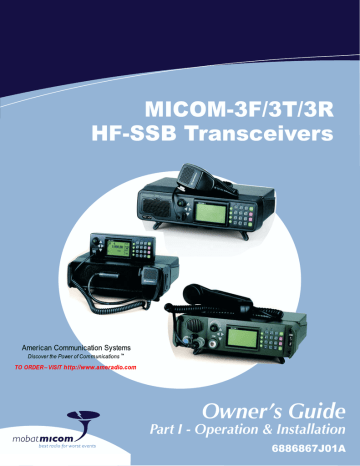Using the New Station Address Filter. Micom 3T, MICOM-3F M91AMNOKV5-K, MICOM-3T M90AMNOKV5-K, 3R, MICOM-3R M95AMNOKV5-K, 3f
Add to My manuals164 Pages
advertisement
▼
Scroll to page 2
of
164
advertisement
Key Features
- 100 watts of transmit power
- Frequency range of 1.6 to 30 MHz
- USB, LSB, CW, and FSK modulation modes
- Built-in automatic link establishment (ALE) capabilities
- Optional VP-116 Mini Voice Privacy Unit for secure communications
- Optional vocoder for enhanced voice quality
Related manuals
Frequently Answers and Questions
What is the frequency range of the Micom 3T?
The frequency range of the Micom 3T is 1.6 to 30 MHz.
What modulation modes does the Micom 3T support?
The Micom 3T supports USB, LSB, CW, and FSK modulation modes.
Does the Micom 3T have built-in ALE capabilities?
Yes, the Micom 3T has built-in automatic link establishment (ALE) capabilities.
Can I use the Micom 3T with a VP-116 Mini Voice Privacy Unit?
Yes, the Micom 3T can be used with an optional VP-116 Mini Voice Privacy Unit for secure communications.
Can I use a vocoder with the Micom 3T?
Yes, the Micom 3T can be used with an optional vocoder for enhanced voice quality.
